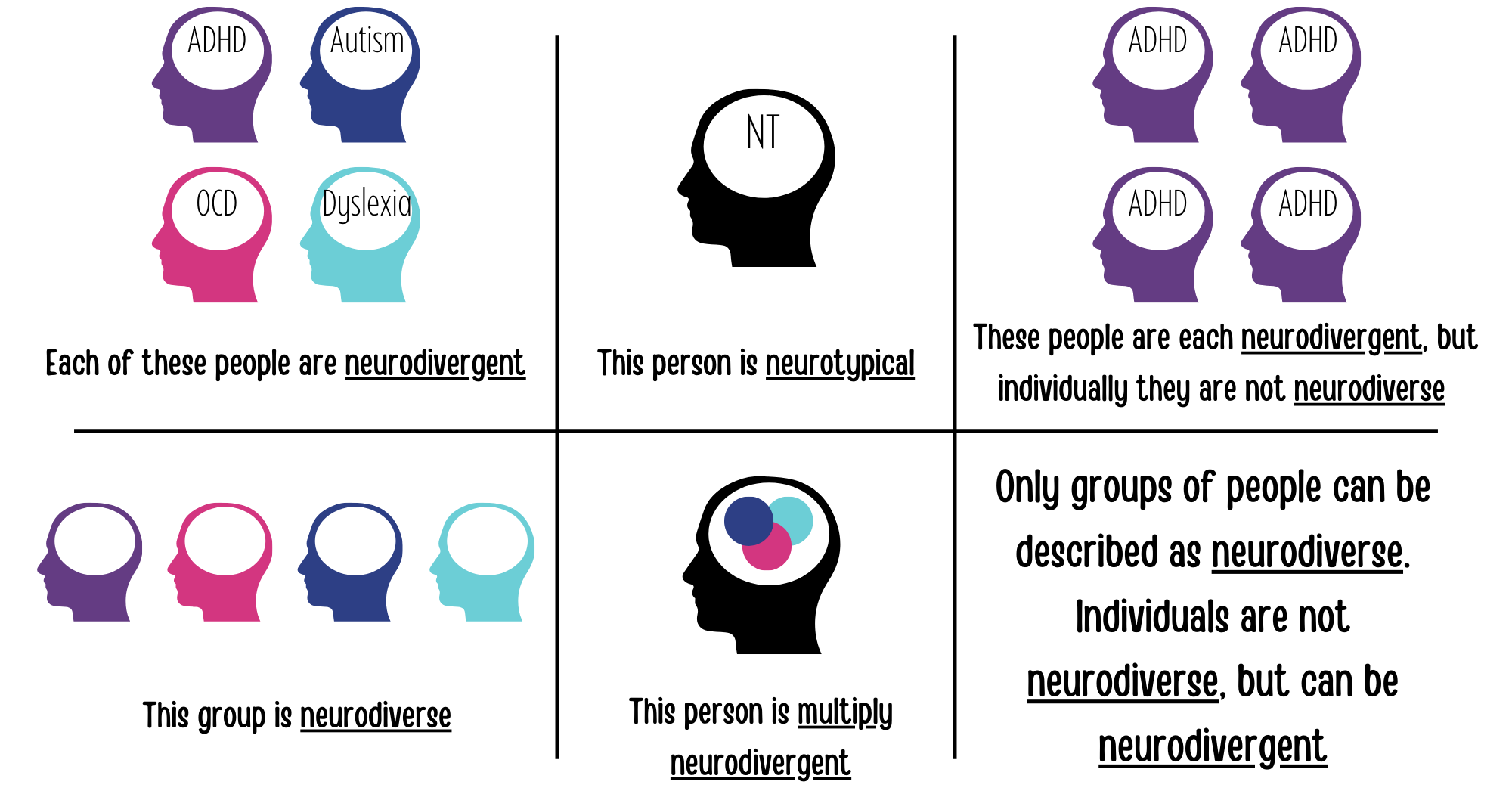Neurodiversity is a word used to describe the naturally occurring range of different thinking styles and variations in human brains. It applies to everyone and implies that there is no ‘right’ or ‘wrong’ way to think, feel and learn.
What is Neurodivergence?
Around 20% of people are believed to have a neuro-difference such as autism, ADHD, or Tourette’s syndrome. Some refer to themselves as ‘neurodivergent’, a term combining ‘neuro’, meaning related to the brain, and ‘divergent’, meaning differing from a set path or style. Conditions often categorised as neurodivergent include, but are not limited to, autism, ADHD, dyslexia, dyscalculia, dyspraxia, dysgraphia, Tourette’s syndrome, and OCD.
Neurodivergence is an umbrella term encompassing various thinking, communication, and learning styles that differ from those of a ‘neurotypical’. Neurotypical ways of thinking, communicating and learning have historically been considered the default and thus, have shaped much of how we now function as a society. However, more recently there has been a growing appreciation of just how important neurodivergent minds are, particularly for the advancement of technology and culture.

It’s important to remember that neither neurodivergent nor neurotypical ways of thinking, communicating and learning are right or wrong; they are simply different. The way that everyone experiences the world will be different, each experience as valid as another.
 "Neurodiversity: the notion that conditions like autism, dyslexia, and ADHD should be regarded as naturally occurring cognitive variations with distinctive strengths that have contributed to the evolution of technology and culture"
"Neurodiversity: the notion that conditions like autism, dyslexia, and ADHD should be regarded as naturally occurring cognitive variations with distinctive strengths that have contributed to the evolution of technology and culture"
Sign up for news and updates
Subscribe to our newsletter for regular updates.

